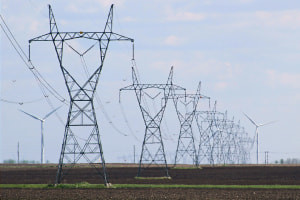This course provides a relatively simple understanding of symmetrical components used to analyse a steady-state three-phase electrical system using a per-phase equivalent circuit. But this method is only valid when you balance the voltages and currents, with each phase having the same impedance. The analysis becomes more complicated when the phase voltages and currents are unbalanced during faults and short circuits. You use the symmetrical components to analyse asymmetrical currents and voltages in such conditions. It is a powerful mathematical technique in power system protection and helps analyse power system faults. Discover how to represent a set of unbalanced phasors into three independent sets of balanced phasors or symmetrical components and analyse the fault conditions. First is an overview of the symmetrical components, who developed them, and how to describe the phasors in terms of these components.
Next, be introduced to the basics of symmetrical components as described by Charles Fortescue and learn the standard notation used to represent the components. Then, investigate the properties of an electrical system’s positive, negative, and zero sequence components and their mathematical interpretations. You will learn to resolve an unbalanced network of three related vectors into three sets of independent vectors. As there are three sets of symmetrical components and three phases, you will learn about the 3X3 = 9 different ways of representing the unbalanced fault condition. You will see how equations are developed with symmetrical components and used to analyse other unbalanced faults. Become familiar with the properties of the ‘a’ operator, used to re-describe the phasors of the various components in terms of the ‘a’ phase that simplifies the analysis. The course also helps you understand how to use symmetrical components to analyse electric systems through problems and solutions.
You will analyse complex system problems using computer algorithms. This course helps you understand how the symmetrical components are applied to solve such issues in the power system. Anyone with a knack for learning new skills can take this course but basic maths is essential to understand the laws and theorems related to three-phase electrical power systems. It will be most beneficial to electrical engineers, technologists, substation engineers, maintenance workers in the electrical power protection industry and others who want to understand how to model electric power systems. Understanding the use of the symmetrical components technique will also enable you to work on all the fundamentals of power system protection and control. This course will also help you study power protection systems for a career in power engineering and electrical engineering. So why wait? Register now and learn for free!
What You Will Learn In This Free Course
View All Learning Outcomes View Less All Alison courses are free to enrol, study, and complete. To successfully complete this Certificate course and become an Alison Graduate, you need to achieve 80% or higher in each course assessment.
Once you have completed this Certificate course, you have the option to acquire an official Certificate, which is a great way to share your achievement with the world.
Your Alison certificate is:
- Ideal for sharing with potential employers.
- Great for your CV, professional social media profiles, and job applications.
- An indication of your commitment to continuously learn, upskill, and achieve high results.
- An incentive for you to continue empowering yourself through lifelong learning.
Alison offers 2 types of Certificate for completed Certificate courses:
- Digital Certificate: a downloadable Certificate in PDF format immediately available to you when you complete your purchase.
- Physical Certificate: a physical version of your officially branded and security-marked Certificate
All Certificate are available to purchase through the Alison Shop. For more information on purchasing Alison Certificate, please visit our FAQs. If you decide not to purchase your Alison Certificate, you can still demonstrate your achievement by sharing your Learner Record or Learner Achievement Verification, both of which are accessible from your Account Settings.











 Avg. Hours
Avg. Hours  Contains Video
Contains Video  CPD Accredited
CPD Accredited 
 Total XP:
Total XP: 
 Knowledge & Skills You Will Learn
Knowledge & Skills You Will Learn 







